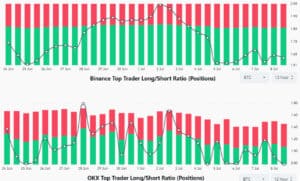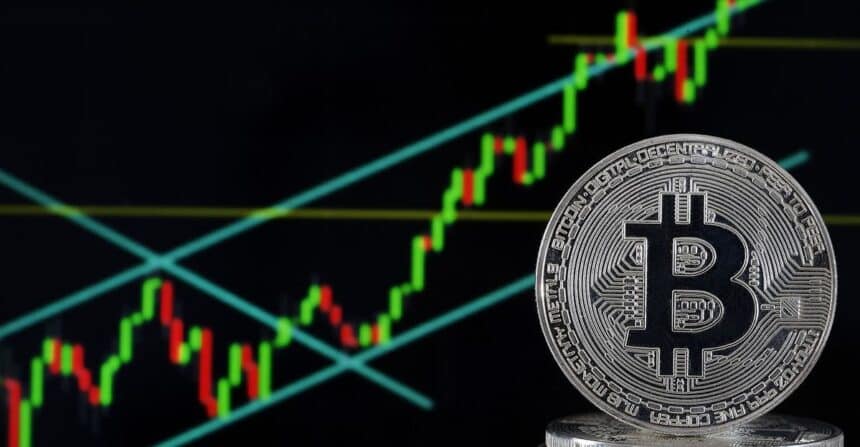Bitcoin has always stood out as a benchmark for the health of the market. Recently, a critical Bitcoin price metric has hit a two-week low, causing concern among investors and traders.
This downturn has raised alarms about whether the ongoing bull market might be losing its momentum.
Bitcoin Price Metric: Recent Bitcoin Price Declines Stir Market Concerns
Bitcoin, the leading cryptocurrency by market value, has experienced a notable decline in its price, falling below $60,000 for the first time since early July. On July 4th, Bitcoin was trading just under this threshold, but by July 11th, it had dropped further to $57,409. This downturn has led to a significant dip in morale among professional traders, marking the lowest level of optimism in two weeks, according to the long-to-short ratio, a key metric that compares the total number of long (buy) positions versus short (sell) positions held by traders.
The decline in Bitcoin price metric is particularly concerning given its previous position near $72,000 in early June. This peak has led some market participants to speculate that we may have already seen the high point of the current market cycle. The lack of enthusiasm is evident among big investors and market makers, who appear hesitant to place bullish bets despite the price drop.

Bitcoin Price Metric: Understanding the Fluctuations and Market Sentiments
Historically, Bitcoin has undergone price corrections of around 25% from its peak values during a cycle, a pattern noted by digital asset advocates like DCinvestor. Such corrections are considered normal and do not necessarily indicate the end of a bull market. However, Bitcoin’s inability to breach the $72,000 mark since late March has contributed to concerns about reduced buying interest among investors.
“ETH and BTC are literally just ~25% off of their intra-cycle tops and y’all think the world has ended…” DC noted.
Adding to the uncertainty are several external factors that could be influencing Bitcoin’s price. These include the sale of over $3 billion worth of Bitcoin by the German government, recovery from criminal proceedings, and the potential upcoming distribution of assets from the defunct Mt. Gox exchange. These events could increase the supply of Bitcoin on the market, exerting downward pressure on prices.
The broader financial market trends are also not in Bitcoin’s favor. The S&P 500 index, for example, has reached new highs, reflecting positive sentiment in traditional investment avenues. In contrast, Bitcoin’s gains this year have been modest compared to major tech stocks and even traditional assets like gold, which remains near its all-time high.
Bitcoin Price Metric: The Impact of Economic Indicators on Bitcoin
The economic landscape is also playing a role in shaping investor sentiment towards Bitcoin. The anticipation of a potential interest rate cut by the Federal Reserve has increased, with the CME FedWatch tool now indicating a 75% probability of a cut by September. This expectation of lower interest rates usually makes fixed-income investments less appealing, which could divert some investment towards riskier assets like Bitcoin. However, the current sentiment among top Bitcoin traders does not reflect this optimism.
According to data from major exchanges like Binance and OK, the long-to-short ratio among top traders has dropped significantly, from 1.8x in early July to just 1.2x a few days later. This indicates that professional traders are reducing their bullish positions, possibly waiting for more definitive signs of market stability before committing to long positions again.

Bitcoin Price Metric: Is the Bitcoin Bull Market Over?
The question on many investors’ minds now is whether Bitcoin can regain its bullish momentum. For this to happen, a restoration of trader confidence is crucial. Despite the current fears and market skepticism, there is still a possibility that Bitcoin could bounce back, particularly if external market pressures subside and investor interest is renewed.
In conclusion, while the current signs are concerning for Bitcoin enthusiasts, the cryptocurrency market is known for its rapid shifts in sentiment and price. Whether this is a temporary setback or a longer-term trend will depend on various factors, including market liquidity, investor confidence, and broader economic conditions.
For ongoing updates on Bitcoin price metric and detailed analysis of the crypto market, stay tuned to The BIT Journal. Understanding these market dynamics can help investors make informed decisions in a landscape that remains unpredictable and often volatile.




























